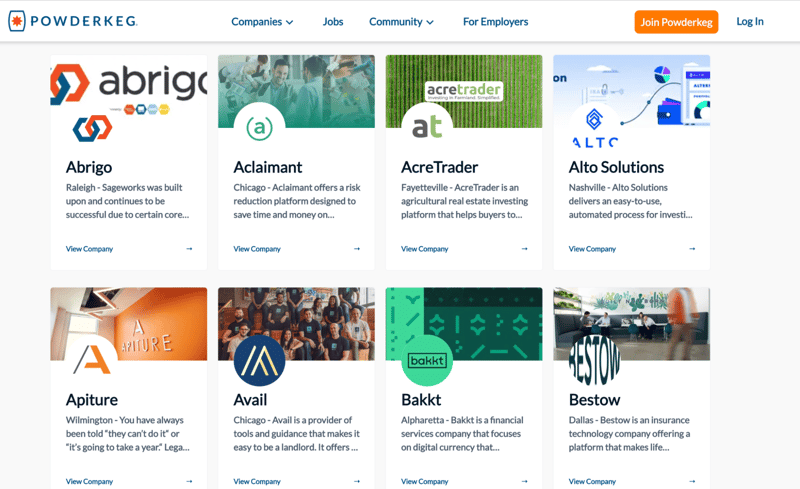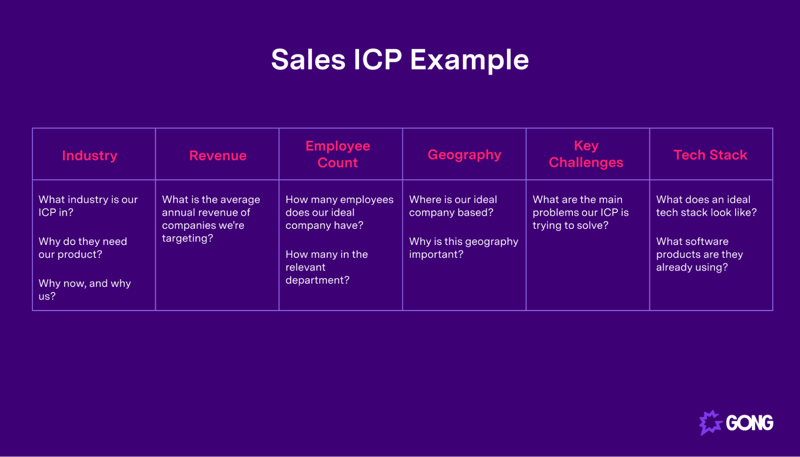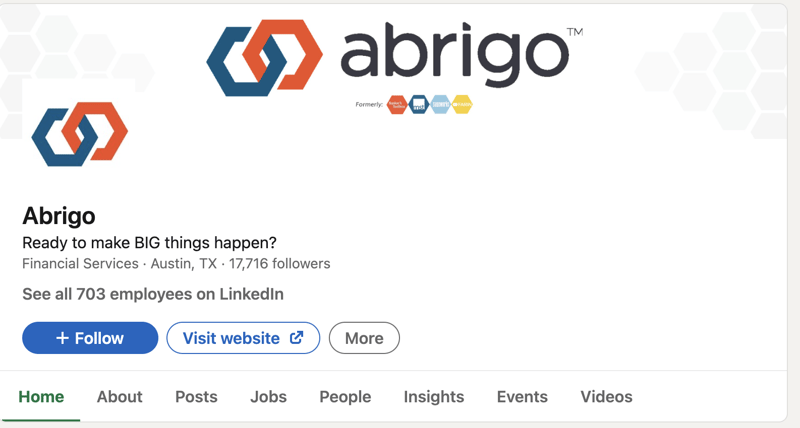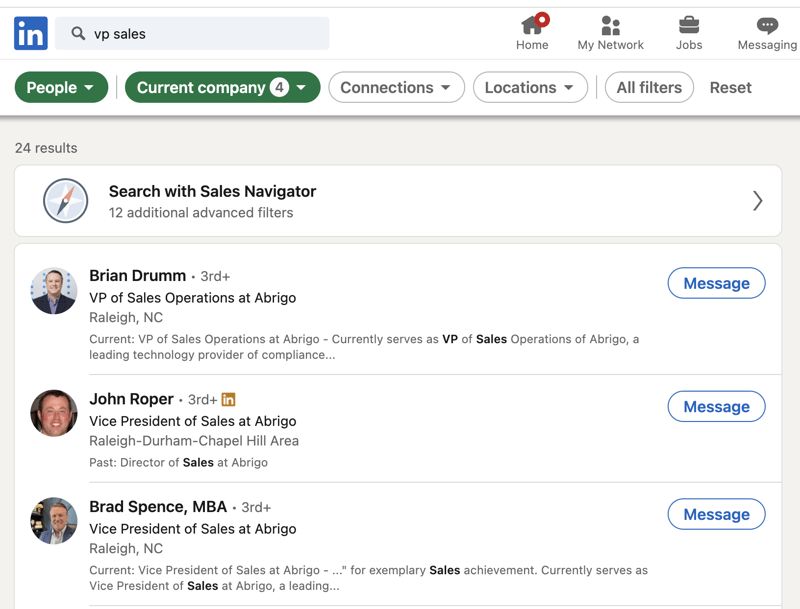
7 Steps in Sales Process: How to Apply Them and When
 Updated on
Updated on
By Ringy
Table of Contents
Table of Contents
Does it seem a little bit like your sales team is all over the place when it comes to nurturing leads?
One minute they're calling every day, the next they're leaving leads cold for weeks. Sometimes they jump to a presentation right away, other times they lose deals because they fail to ask for the sale.
Sound familiar?
You need a sales process, and you need one fast.
While every team's sales process is going to look slightly different, there are some pretty huge similarities across the board, so much so that most sales processes follow roughly the same seven steps.
In this article, we're going to dive deep into the textbook seven-step sales process, discussing:
- What the seven steps of the sales process are
- What's involved in each stage and what activities should take palace
- Essentials to focus on
- Best practices for getting your seven-step sales process set up
- The difference between a sales process and a sales methodology
- What the inbound sales methodology is and why and when it's useful
Types of Sales
There are two main types of sales, each with its own approach and target audience:
- Business-to-Business (B2B): In B2B sales, you're selling products or services to other businesses. These transactions typically involve larger sums of money, longer sales cycles, and more complex decision-making processes. B2B salespeople often deal with multiple stakeholders within the buying organization.
- Business-to-Consumer (B2C): Here, you're selling directly to individual consumers. B2C sales usually involve smaller transaction sizes, shorter sales cycles, and more emphasis on emotional connection and brand messaging.
The table below summarizes the key differences between B2B and B2C sales:
|
Feature |
B2B Sales |
B2C Sales |
|
Target Audience |
Businesses |
Individual Consumers |
|
Transaction Size |
Larger |
Smaller |
|
Sales Cycle |
Longer |
Shorter |
|
Decision-Making Process |
More complex, involving multiple stakeholders |
Simpler, often driven by individual needs |
|
Sales Focus |
Building relationships, addressing business needs |
Emotional connection, brand messaging |
The Textbook Sales Process in 7 Steps
Let's start by answering the most burning question: What are the 7 steps in the sales process?
The seven steps of the sales process are:
- Prospecting
- Preparation
- Approach
- Presentation
- Handling objections
- Closing
- Follow-up
Time to explore each in more detail.
1. Prospecting
The first of the seven steps of the sales process is prospecting.
Prospecting is the process of hunting down potential people to sell to.
Note that this is especially relevant to outbound B2B sales. In the inbound sales world, leads come to you, so much less prospecting is involved.
Prospecting involves identifying businesses to sell to, prequalifying them against your Ideal Customer Profile (ICP), and then finding the people in the organization you're going to communicate with.
Here's an example:
Say we're selling a sales CRM (you know, like Ringy), and we're currently targeting SaaS businesses, specifically in the finance sector.
We might start super broad, searching Google for articles that offer lists of top fintech companies, like this one:

That's dozens of potential prospects already. Let's start with Abrigo.
Now, we need to go through each and match them against the requirements in our ICP.
If you're unfamiliar with ICPs, they're documents that outline what kind of companies we should target. They include information in six categories:
- Industry
- Revenue
- Employee count
- Geography
- Key challenges
- Tech stack

We've already taken care of the industry aspect. Let's say our ICP says that we can only target companies with more than 200 employees. We're going to jump on LinkedIn and confirm this.

Looks good; they meet all the ICP requirements (in reality, you'd have more, but this is sufficient for this example).
Now we're going to find some people to talk to, and we know from our customer personas that we're looking for a VP of Sales Operations.

Brian Drumm is our guy, and that wraps up the prospecting phase.
2. Preparation
The preparation phase is about getting ready to make contact.
We're going to learn what we can about Mr. Drumm and Abrigo, looking for things like:
- His stance on certain sales issues
- Abrigo's current tech stack
- How many sales reps Abrigo has
- What the company sells and who they serve
Essentially, we don't want to start our sales approach off on the back foot by not knowing a thing about who we're talking to.
Suppose we can figure out exactly how our product can help Abrigo (as well as our prospect specifically). In that case, we have a much better chance of grabbing their attention and proceeding with the later stages of the sales process.
3. Approach

The approach is the first point of contact with our prospect. Note that this isn't a pitch. We're not going to call up Mr. Drumm and say, “Hey, here are all the awesome things about our CRM. Wanna buy it?”
The main idea is to open a conversation with our prospect. A good way to kick this off is by asking a question.
We might ask about a common problem, like, “Hey Brian, I'm wondering how your sales team currently handles lead management?”
Or, if we want to start a little slower and focus on building trust first, we might ask something about a recent post of his on LinkedIn (“Hey, I saw your post about X, and I was wondering, what do you think is the impact on Y?”)
The other approach we could take is to get straight to the point:
“Hi Brian. I'm reaching out because we can help you deliver automated drip campaigns that save your sales reps' time and drive more revenue. Does that sound like something you'd be interested in discussing?”
4. Presentation
The presentation is where a sales demonstration takes place.
So, say we're successful in our conversations with the VP of Sales Operations at Abrigo, and he's interested in learning more about the features our CRM offers.
We need to set up a meeting to run through a personalized sales demonstration. This is the “pitch,” but it must be customized to our prospect's needs.
For instance, email marketing is a feature we offer. Still, Mr. Drumm has told us that his team has another tool they use for email marketing, as well as a variety of other marketing automation activities.
In our sales demo, we aren't going to focus heavily on our email marketing feature in that case. What we will do, however, is discuss how Abrigo can set up a custom integration between Ringy and their email marketing platform using Zapier for a seamless customer experience.
5. Handling Objections
Sales conversations almost always involve objections.
They might be outright objections, such as the price objection (“It's more than we can afford”), or an indirect objection, such as the approval objection (“I need to check with my manager”).
In any case, the idea of this phase is to guide your customers through whatever objections they have and get them over the barrier to a deal.
Let's say, for example, that Mr. Drumm has told us that he's happy with what he's learned about our product and confident that our CRM can solve the challenges his sales team is currently having.
The problem is they're locked into a 12-month contract with their existing CRM provider and still have four months left on the contract.
6. Closing

This is where we ask for the sale and close the deal.
Often, this is combined with the objection handling stage, as the assumption is that if all objections are handled, the sale will proceed.
Consider the objection mentioned above.
One option for solving this objection might be the concession approach, whereby you concede something (i.e., give an offer) in the expectation that they will too. This leverages the reciprocity principle, which is a psychological notion that we're often motivated to return a favor.
In this case (cause we're such good guys), we extend the following offer: “Brian, how about I meet you halfway? If you can get sign-off to start implementation next month, I'll give you the first two months of your new contract for free, so you're only paying for that CRM you're finding difficult to work with.”
P.S. Notice how we reiterated Mr. Drumm's biggest problem with his current solution (it's difficult to work with) to really drive home the urgency of the switch.
Assuming this is a satisfactory solution, the deal is closed as won, and we have a sale, ladies and gentlemen.
7. Follow-up
But wait, the sales process isn't quite over, don't go making your victory dance just yet.
The last stage in the seven-step sales process is the follow-up.
How this looks exactly depends a bit on what it is you sell. For instance, if you sell used cars, you'll probably call the customer after two weeks to make sure everything is going well (and to use it as a chance to ask for a referral).
If you sell a software product, as is the case in the example we've been discussing so far, then there is generally a handover to an account manager or customer success manager that takes place. The relationship becomes theirs to develop from there.
So, Mr. Customer Success Manager, meet Mr. Drumm from Abrigo, your newest customer.
The Essentials of the 7 Step Sales Process

Aside from being aware of the seven stages in the sales process, you also need to know about five tips to really make the most of your sales conversations – 1) always identify your customer's problem, 2) always develop a solution for their issue, 3) be persistent (but not nagging), 4) be flexible, and 5) ask for the sale.
Let's look at each in more detail.
Identify Your Customer's Problem
This is the crux of what defines a good salesperson: the ability to get to the center of a customer's challenges.
Whatever it is, whether it's a physical product, a software platform, or a professional service, you solve some kind of customer challenges.
Actually, you probably solve several, so don't make the mistake of assuming you know what your customer is going through.
It's simple: ask.
For instance, we might ask Mr. Drumm, “What things frustrate you and your team about your current CRM platform?”
Develop a Solution for Your Customer
Once you've identified the actual issue, it's time to put together a solution to that problem. That is, we want to avoid throwing a generic pitch at our prospect, we want to show that we've been listening by catering directly to their needs.
Mr. Drumm tells us that their current CRM tool isn't very flexible and is hard to use.
So, we're going to provide a solution and show him just how easy to use our CRM is.
Be Persistent
Your customers are busy, especially if you're selling B2B.
In our case, our prospect is a VP of Sales Operations at a large enterprise company. That's a big job, and we know our prospect has a lot on his plate.
Don't be afraid to be persistent (but not naggy).
Get this: 80% of deals need five or more follow-up calls to close. Nearly half of sales reps only make one call.
If you're one of them, you're leaving money on the table.
We're going to find the right balance between persistence and neediness by continuously catering to our prospect's issues, “Hey Brian! I know you've got a lot on your plate right now, especially with all the headaches your current CRM tool is creating. I'm calling to follow up on our conversation last week….”
Keep driving that pain point home!
Be Flexible to Your Customer's Needs
Yes, it's your job to lead the sale, but you should be cautious of becoming too pushy.
Where possible, you should do what you can to support your customer's needs.
Let's say our prospect tells us he needs to confirm with John Roper and Brand Spence, the two Sales VPs at Abrigo, as they'll also be in charge of implementing the CRM change.
Rather than saying, “Okay, sounds good. Let me know when you've spoken to them”, we can provide additional support to our prospect's needs while subtly pushing the sale along with a phrase like this:
“That makes sense. Tell you what. I know you've got a lot on your plate at the moment; how about I set up a call with the two of them to run through any questions they might have?”
Ask for the Sale
Many sales reps fail to actually ask for the sale.
No, that doesn't mean begging and pleading. It just means knowing when to jump in and ask the question rather than waiting for your prospect to pipe in and say, “Okay, where can I sign?”
So, we're going to ask Mr. Drumm:
“Alright, Brian, so it sounds like we've ironed out all the potential challenges with replacing your current CRM. Shall I get our team to draw up a contract and organize a time to start with implementation?”
Best Practices for Implementing the 7 Steps of the Sales Process

Ready to implement your new seven-step sales process?
Take notice of these three best practices first, they'll help you excel:
- Create buyer personas
- Understand your product
- Use a pipeline tool to manage the sales process
- Develop documentation that shows reps how to follow your sales process
- Continue the relationship beyond the sale
- Identify opportunities for coaching
Create Buyer Personas
Before diving into prospecting, it's vital to understand who your ideal customer is. This is where buyer personas come in. A buyer persona is a detailed profile that represents your target customer. It includes demographics, firmographics (for B2B sales), behavioral patterns, challenges, and goals.
By creating buyer personas, you gain valuable insights that inform your entire sales process, from crafting targeted messages to understanding their buying journey.
Understand Your Product
This might seem obvious, but a deep understanding of your product or service is essential for effective sales conversations. Mastering the 7 steps of the sales process goes hand-in-hand with product knowledge.
Being able to connect your product's features and benefits directly to the needs and pain points of your buyer persona is key. This empowers you to tailor your sales pitch, address objections confidently, and ultimately demonstrate the value proposition your product offers.
Use a Sales Pipeline Tool to Manage the Process
Your process should be reflected somewhere, not just sort of hanging in the air where nobody knows which stage each lead is actually at.
Use the sales pipeline capabilities in your CRM for this.
Create one pipeline stage for each of the seven steps, so it's clear to your reps and you as the manager where each lead is at.
Plus, this will also help you pull out helpful insights like:
- Whether sales process stages are being skipped and by whom
- Conversion rates at each stage
- How long each prospect is spending at each stage (i.e., pipeline velocity by stage)
Develop Documentation That Shows Reps How to Use the Sales Process
Having a great sales process is one thing; having reps that actually use it is another.
Apart from having to adopt a specific mindset toward coaching and development, where you focus not only on the soft skills each rep possesses but how (or even whether) they use the sales process, you should also go heavy on documentation.
Start with an overview document that describes the importance of following sales processes in general and why you've designed your seven-step sales process in the way that you have.
Then, go a level deeper and describe:
- What actions should be taken at each stage
- How they should use your sales pipeline tool to manage the process
- What to do if they feel they need to go outside the process with a given prospect
Make sure all of that documentation is easily accessible in a centralized location. Use a tool like Notion or Slite to make this whole process easy.
Continue the Relationship Beyond the Sale
The sale should not be the end of the road. Building long-term relationships with your customers is a cornerstone of successful sales.
Following best practices involves providing excellent customer service, offering ongoing support, and keeping them informed about new product developments or industry trends. This fosters trust and loyalty, making them more receptive to future upsells or cross-sells and potentially turning them into brand advocates.
Identify Opportunities for Coaching
Always be on the lookout for opportunities to provide additional coaching around sales processes. Don't just say, “Hey, here's the new process, use it.”
Part of your coaching should involve compliance, that is, getting reps to follow the process. But your main focus should be on improving skill sets.
For instance, you might identify that your reps are having trouble at the closing stage because you have a low pipeline stage conversion rate here.
So, you'll run some training sessions to upskill reps in this area, giving them a few word tracks and methodologies for closing a sale.
Speaking of methodologies…
Sales Process vs Sales Methodology: You Need Both

Your sales process is the steps you take during a sale to close a prospect. Your sales methodology is the broader philosophy and concept behind how you sell.
Examples of sales methodologies include:
|
Sales methodology |
Key concepts |
|
SPIN selling |
Reps ask four kinds of questions:
|
|
NEAT selling |
A qualification framework that looks for information in four areas:
|
|
Reps take a “teach, tailor, take control” approach, where they are more likely to push back on the customer and focus more on the end goal than being liked. |
|
|
MEDDIC is a qualification framework:
|
Then, you have the outbound and inbound sales methodologies.
Inbound Sales Methodology Explained
In short, outbound sales is a methodology where reps approach customers cold, and inbound is a methodology where marketing and sales teams collaborate to attract leads to the company.
Here, we're going to dive a bit deeper into the inbound sales methodology and inbound sales process steps. If you're interested in learning more about outbound sales, check out our guide: 7 Proven Outbound Sales Strategies to Test Out in 2022.
First, here's a quick summary.
|
Inbound sales methodology stage |
Stage summary |
|
Identify: Awareness stage |
Customers initially become aware of a challenge. No sales rep involvement. |
|
Connect: Consideration stage |
The customer realizes they need to solve the issue. A sales rep connects with the customer and asks for an opportunity to explore the issue further. |
|
Explore: Consideration stage |
The rep and the customer explore potential solutions to the problem together. |
|
Advise: Decision stage |
The customer makes their final decision, guided by the rep's advice on what to do. |
Identify: Awareness Stage
During the awareness stage, customers become aware of a given pain point (hopefully through some of your inbound content, like blogs or LinkedIn posts).
Your sales team is not directly engaging at this point. The idea is that the customer is educating themselves with your content. There may be some company involvement (for instance, the customer might sign up for an email sequence to learn more), but it's still self-service.
Connect: Consideration Stage
At this point, the customer recognizes the need to solve the challenge and starts to consider their options.
This is where a salesperson should connect.
It's likely to be a quick email asking for an opportunity to connect for a phone call to explore their current situation and possible solutions.
Explore: Consideration Stage
The rep and the customer explore the problem together. The customer is likely assessing other options, but that's okay. Your job is to explore solutions to the problem, not to close yet.
Advise: Decision Stage
This is where the customer makes their final decision, and a sale occurs. The rep advises what to do, generally leaning into how one of their products or services is an ideal solution.
Challenges in the Sales Process and Solutions
Even with a well-defined sales process, there will be hurdles along the way. Here are some common challenges and effective solutions to keep your sales pipeline flowing:
A Competitor Picks Off Your Customer
Losing a sale to a competitor can be frustrating. However, by analyzing the 7 steps of your sales process in lost deals, you can identify weaknesses. Perhaps your competitor offered a better price, features, or simply provided a more compelling value proposition.
Conduct competitor research to understand their strengths and weaknesses. Throughout the sales process, highlight your unique selling proposition (USP). Focus on the specific benefits your product or service offers that the competition can't match.
Silent Leads
Sometimes, leads go quiet after initial contact. This can be due to various reasons, like unqualified leads or poor timing. Effective sales methodologies emphasize lead qualification during the prospecting stage.
Don't give up on silent leads entirely. Develop a nurturing strategy with targeted emails or social media outreach. Provide valuable content that addresses their pain points and re-engage them when the timing is right.
Too Much Red Tape
B2B sales often involve multiple decision-makers and complex approval processes, which can significantly lengthen the sales cycle. Understanding the sales process helps you anticipate these hurdles.
Map the decision-making journey and identify all stakeholders involved in the buying decision. Tailor your communication to address each decision-maker's specific needs and concerns. Proactive communication and clear value demonstrations can help streamline the approval process.
Conclusion

Managing a sales process is about more than just writing it on paper.
You need a CRM platform to help your team manage the process itself, and you want one with a powerful reporting and analytics suite so you can analyze performance at each stage and pull out key insights that inform your coaching and training activities.
If it's not obvious, Ringy is the CRM tool you need.
Book a demo with one of our team today, and discover just how our intuitive software can help transform your sales process and get your sales team firing on all cylinders.

Skyrocket your sales with the CRM that does it all.
Calling? Check. SMS? Check. Automation and AI? Check. Effortlessly keep in touch with your customers and boost your revenue without limits.

Take your sales to new heights with Ringy.
Sales in a slump? Ringy gives you the tools and flexibility you need to capture leads, engage with them, and turn them into customers.
Subscribe to Our Blog
Enter your email to get the latest updates sent straight to your inbox!
Categories
Related Articles



































































































